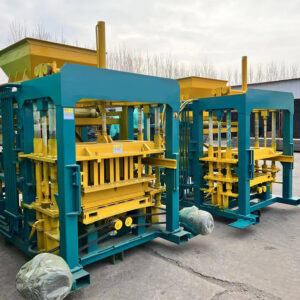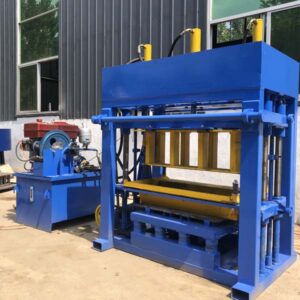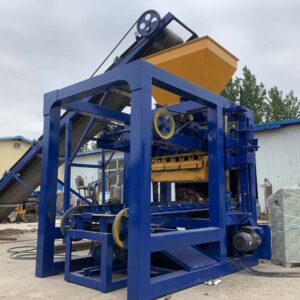
The production of bricks has undergone significant technological advancements in recent years, with the advent of automated brick making machines. These machines have revolutionized the brick-making industry, streamlining the production process and enhancing the quality and consistency of the bricks produced. This article delves into the production process of a brick making machine, highlighting the various stages involved in the creation of bricks from raw materials to the final product.
1. Raw Material Preparation
The first step in the brick-making process involves the preparation of the raw materials. Typically, bricks are made from a mixture of sand, clay, and water. The specific proportions of these materials depend on the desired properties of the bricks, such as strength, durability, and color. The raw materials are carefully measured and mixed in a large mixer to ensure a uniform consistency.
2. Material Feeding
Once the raw materials are prepared, they are fed into the brick making machine. Modern brick making machines are designed with automatic feeding systems that ensure a continuous and controlled supply of the mixed materials to the production line. This ensures a smooth and efficient production process.
3. Compaction and Shaping
The next stage involves the compaction and shaping of the raw materials into bricks. The brick making machine uses powerful hydraulic presses or mechanical presses to compress the materials into dense, solid bricks. The pressure applied is carefully controlled to ensure the desired density and strength of the bricks. Simultaneously, the machine shapes the compressed materials into the desired brick size and shape, which can vary depending on the specific requirements of the customer.
4. Brick Curing
After shaping, the bricks are moved to the curing stage. Curing is a crucial step in the brick-making process as it involves the gradual hardening of the bricks through a controlled drying process. Modern brick making machines often have integrated curing chambers that provide the necessary environmental conditions for effective curing. The curing process typically involves maintaining a constant temperature and humidity level within the chamber to ensure uniform drying of the bricks. The duration of the curing process depends on the type of raw materials used and the desired properties of the bricks.
5. Brick Stacking and Packaging
Once the bricks have been cured, they are ready for stacking and packaging. The brick making machine typically has a stacking mechanism that automatically arranges the bricks in整齐 stacks for easy transportation and storage. The stacked bricks are then moved to the packaging area, where they are packaged in accordance with the customer’s requirements. Packaging materials such as plastic wrap or pallets may be used to protect the bricks during transportation and storage.

Quality control is an integral part of the brick-making process. Throughout the production process, samples of bricks are regularly taken and tested to ensure they meet the specified quality standards. This involves checking the bricks for defects, such as cracks or uneven surfaces, as well as verifying their strength and durability. Any bricks that fail to meet the quality standards are discarded, ensuring only the best quality bricks reach the market.
7. Environmental Considerations
Modern brick making machines also take into account environmental considerations in their production processes. Manufacturers strive to use sustainable raw materials and reduce waste generation during production. Additionally, many brick making machines are designed to minimize energy consumption and emissions, contributing to a more environmentally friendly brick-making industry.
In conclusion, the production process of a brick making machine involves multiple stages, from raw material preparation to final packaging. Each stage is carefully controlled to ensure the production of high-quality bricks that meet the specific requirements of customers. The use of automated brick making machines has revolutionized the brick-making industry, making the production process more efficient, cost-effective, and environmentally friendly. With continuous advancements in technology, the brick-making industry is poised to continue evolving and meeting the changing needs of the market.

